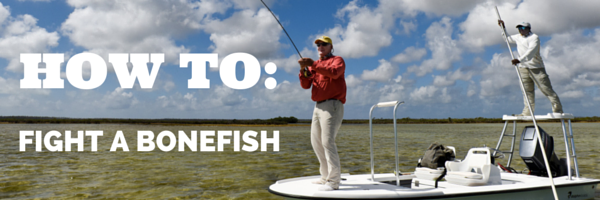Once you have learned how to spot the bonefish and have gotten them to take your fly or bait, it’s time to learn how to fight bonefish so that you can successfully reel it in. Although you might run into a few bonefish that don’t put up much of a fight, knowing how to respond to an aggressive fighter is often the most important part of claiming your trophy fish. The following is everything you need to know about letting this fish run, keeping your line at the right angle and intact, pulling bonefish when they change directions and reeling them in.
Keep Your Rod Tip Low To Exert Optimal Power On Smooth Bottoms
Lowering your rod tip and keeping it off to the side will allow you to exert optimal power on a running bonefish. This makes it possible to bend the butt of the rod with ease. This strategy works best on smooth bottoms as there is no fear of dragging your fish over a bunch of sharp and jagged obstacles. Keep Your Rod High On Rough Bottoms If you are fishing over mounds, weeds or coral, you want to keep your rod tip high. This will prevent you from dragging your flyline, leader and bonefish across the rough, abrasive bottom. Moreover, an elevated rod tip will invariably keep the nose of the fish higher as he pulls his way through the obstacles that line the floor. It will also prevent the fish from traveling sideways into rough debris. Best of all, although it will take a bit more effort on your part, it is still possible to bend the butt of your rod when you need more power.
Let Your Bonefish Run
If you remembered to strip-set and are confident that he’s securely hooked, let the bonefish run. You must stay ready to let the reel handle go at any time once you’ve hooked a bonefish as these fish are known for initiating sudden and aggressive runs. Once the fish starts moving and you get a deep tug, let the reel go and get ready to dig in.
Give A Hard Pull To Tire Your Fish Out
Once a fish stops running or starts moving in another direction, pull back on the butt of the rod while keeping it angled low to the water. You don’t want the rod to rise during your pull because you’re not fighting a small, lightweight trout. A well-timed pull will tire the fish out and ensure that you can reel him in before he gets snatched up by another predator. Use a leader of 12 pound test or more, giving it a good pull shouldn’t cause any problems.
Set Your Rod At The Right Angle
You can exert more force on a fish by holding your rod at a severe angle to his path. Rather than dragging the fish around like you might do to a dog on a leash, pull hard in the opposite direction. This is going to help you bring your fish in far more quickly than if you angle your rod in the same direction that the fish is swimming in.
Be Ready For Your Fish To Do Something Dangerous
When every other maneuver has failed, bonefish will often become a bit more drastic in their efforts and thus, they could dive right under your boat. This is how fly rods, fly lines and leaders get broken. Avoid high-sticking at all costs and keep your rod tip down. Instead of trying to drag the fish back under the boat once he has reached the other side, dip your rod tip about a foot beneath the surface while keeping the rod and the line from touching your boat. You can then ease your way around the bow so that the fly line is cleared. You’ll be able to finish the fight on the other side of the boat.








